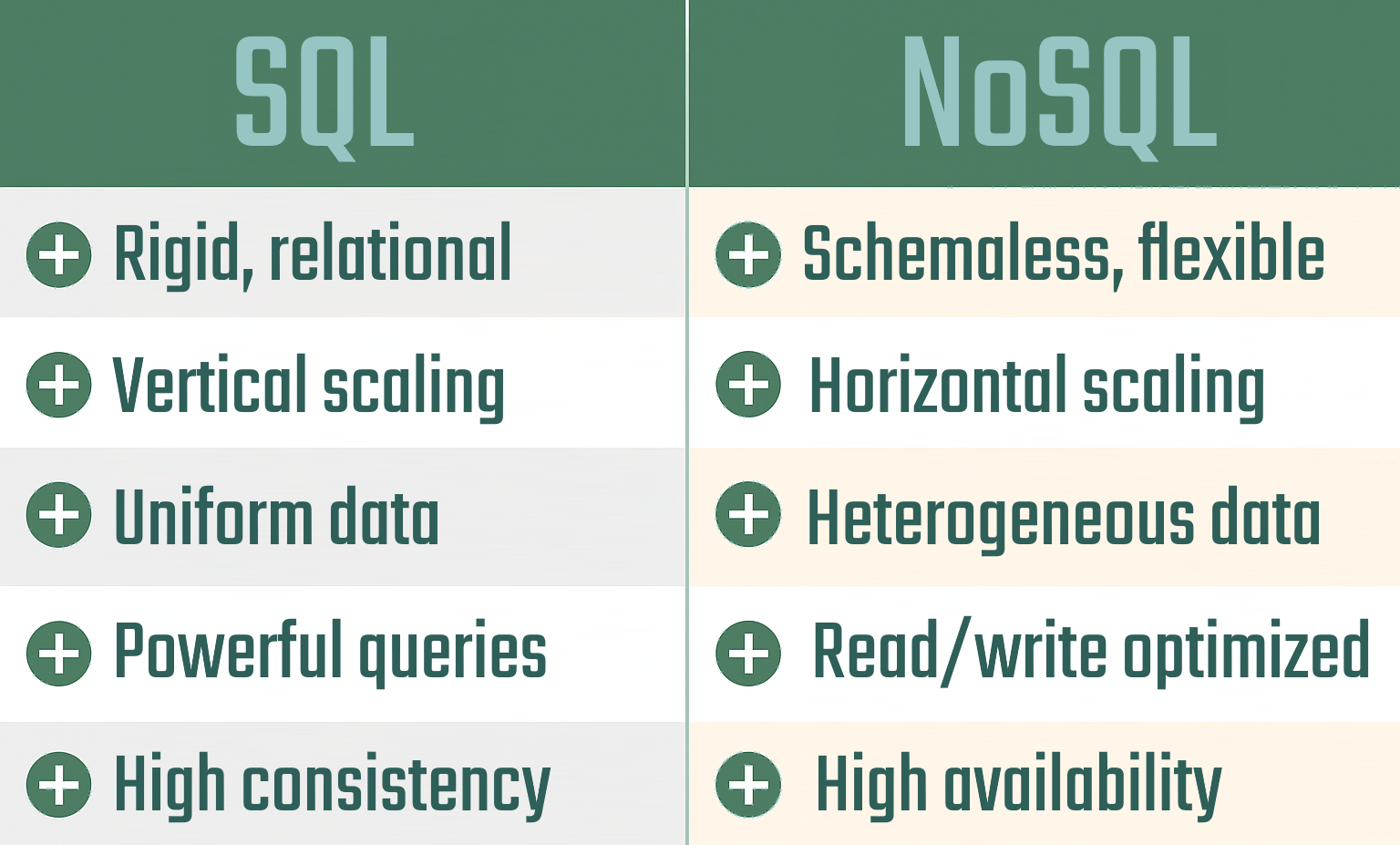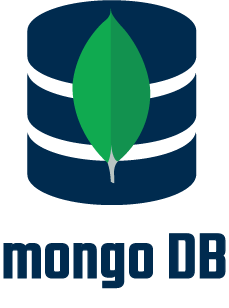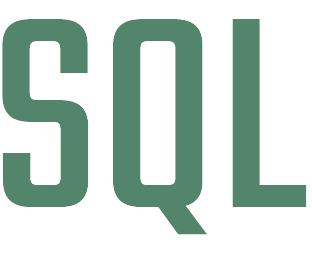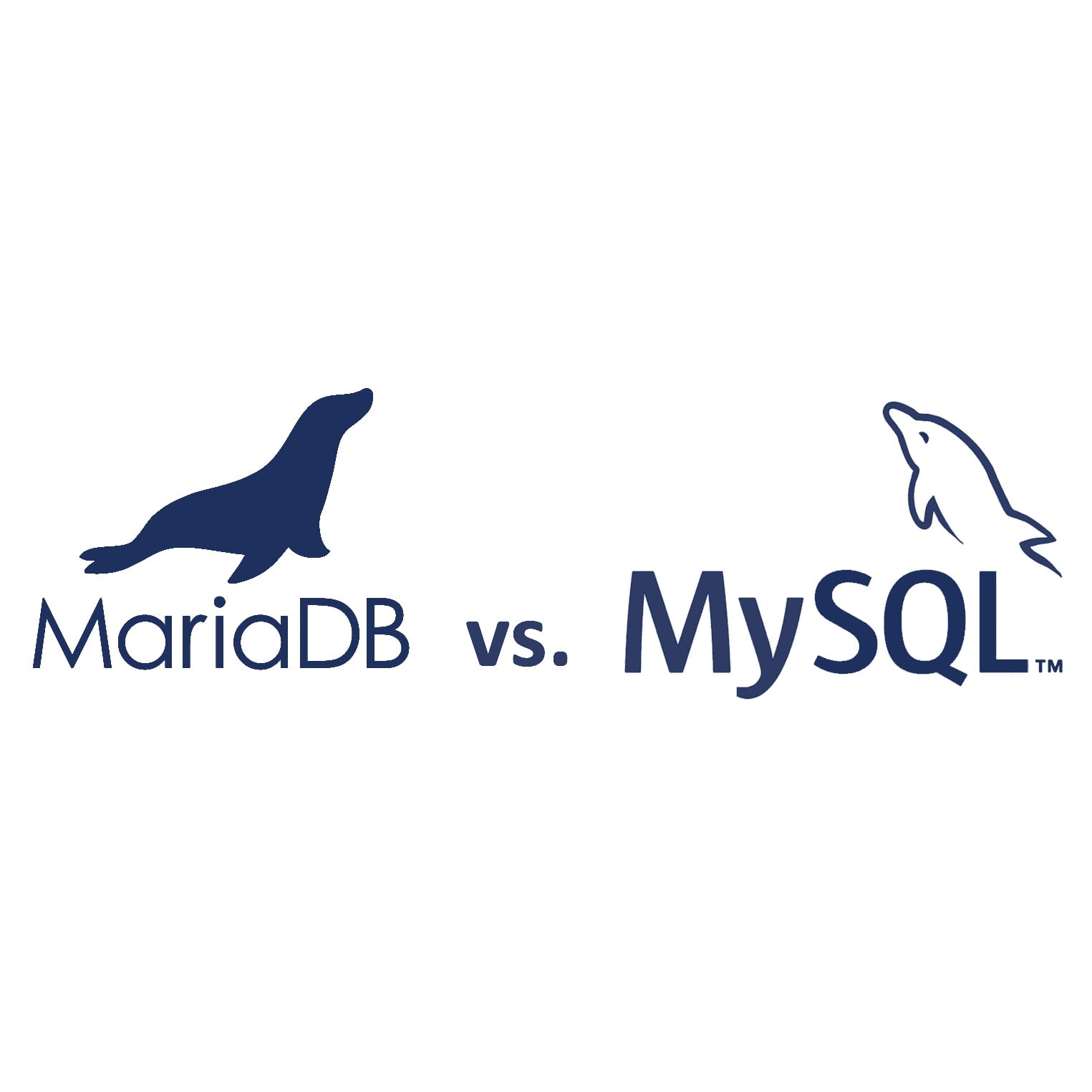What is NoSQL?
NoSQL (derived from “Not only SQL”) describes a modern class of database systems that are not based on the rigid, relational table structures of classic SQL databases. Instead, they enable flexible, schema-less storage of data that can evolve dynamically. They can store data in different formats, such as documents, key-value pairs, column families, or graphs. This flexibility is particularly well suited for efficiently managing large amounts of distributed and unstructured data. NoSQL databases are designed for horizontal scalability and high availability—ideal characteristics for data-intensive Industry 4.0 applications.
1. Features of NoSQL databases for industry
In modern production environments, IoT devices, sensors, machines, and edge systems generate huge amounts of diverse data every day. Traditional SQL databases often reach their limits when it comes to real-time collection and analysis of these heterogeneous data streams. NoSQL database systems offer decisive advantages here:
- Flexible data schemas: No fixed table structures are required. Data can be structured in different ways and develop dynamically (e.g., JSON documents).
- High availability & easy scaling: By replicating across multiple servers, NoSQL databases are more resilient and can be scaled up more easily and cost-effectively.
- Optimal performance: They are optimized for fast read and write access to large and unstructured amounts of data.
- Decentralized data storage: NoSQL systems are ideal for distributed architectures such as cloud or IoT setups, as they can use data in a decentralized and high-performance manner.
2. Differences between NoSQL and SQL
NoSQL and SQL databases differ in their fundamental architectural principles. The following comparison highlights key differences in terms of data model, scaling strategies, supported data types, query performance, and fault tolerance.
- Data Model
NoSQL: Works schemaless (e.g., JSON documents, key-value, graphs), allowing for flexible and dynamic data structures.
SQL: Uses a rigid, relational model with fixed tables, columns, and data types. Changes to the schema are complex. - Scalability
NoSQL: Scales horizontally (by distributing across many servers), ideal for Big Data and IoT scenarios.
SQL: Typically scales vertically (more performance through stronger hardware). - Data Types & Usage
NoSQL: Optimal for unstructured, heterogeneous data streams (e.g., sensor data, machine status, digital twins).
SQL: Good for structured, uniform data (e.g., classic business applications, ERP, financial systems). - Performance & Access
NoSQL: Optimized for fast read/write access in real time on large data volumes, often with simplified or specialized query languages.
SQL: Strong querying and analysis capabilities through a powerful, standardized query language (SQL). However, performance suffers with very large, unstructured data sets. - Availability & Fault Tolerance
NoSQL: Often relies on replication and decentralized structures, prioritizing high availability and fault tolerance (eventual consistency).
SQL: High consistency (ACID principle), but often limited availability in case of failures.
SQL is strong for structured data and complex transactions, while NoSQL offers advantages in dynamic, distributed Industry 4.0 environments.

3. Specific use cases in industry
The flexibility and scalability of NoSQL databases make them an ideal solution for the dynamic requirements of Industry 4.0.
Typical areas of application are:
- Sensor data acquisition: Temperature, pressure, or vibration data can be continuously written to a NoSQL database. This is the ideal basis for predictive maintenance scenarios.
- Digital twin: Machine data and plant status are stored as JSON documents and form digital representations of real plants. These digital twins are centrally accessible and scalable.
- Production monitoring: NoSQL enables the dynamic storage and analysis of heterogeneous data streams, for example from PLC controls (via OPC UA) or external systems (via REST APIs).
4. Practical example: NoSQL integration with the OPC Router
A well-known example of NoSQL is the document-oriented database MongoDB. In industrial projects, it is often used as a fast and secure storage solution for process and sensor data. The OPC Router, a flexible middleware, uses special plugins to retrieve data from production (e.g., via OPC UA) and store it directly in MongoDB.
- With the MongoDB plugin, OPC UA, MQTT, or SQL data can be easily and directly stored in document-based structures.
- The REST plugin enables communication with NoSQL services in the cloud.
- The OPC UA plugin serves as a link to automation systems and structures raw data directly for NoSQL-enabled storage solutions.
This interaction makes it possible to efficiently connect local automation with modern cloud and big data architectures.
5. Conclusion
NoSQL is not a competitor to SQL, but rather a useful addition for data that does not fit into rigid relational structures.
NoSQL offers many advantages, especially for dynamic, distributed, and scalable applications in industrial and IoT environments. In combination with suitable middleware solutions such as the OPC Router, data from controllers, sensors, and IT systems can be flexibly stored, networked, and used for real-time analysis.
6. Micro-FAQ on “What is NoSQL?”
- What is NoSQL?
NoSQL (“Not only SQL”) describes flexible, schema-less database systems that can store different data formats such as documents, key-value pairs, or graphs.
- Why are NoSQL databases so important for Industry 4.0?
They enable the processing of huge, heterogeneous amounts of data from sensors, machines, and IoT systems—in real time, with high availability and scalability.
- What is the difference between NoSQL and SQL databases?
SQL works with fixed table structures and usually scales vertically. NoSQL is schema-less, scales horizontally across many servers, and is better suited for unstructured data streams.
- What are some typical applications in industry?
NoSQL is used for sensor data acquisition, digital twins, and production monitoring, among other things—often as the basis for predictive maintenance.
- How does the integration of NoSQL into existing systems work?
Middleware such as OPC Router makes it easy to store production data in NoSQL databases (e.g., MongoDB) and connect it to cloud and big data architectures.
Further information
The Mongo DB impresses with its performance and high horizontal scalability. You can find out what the database does and how it works in our article.
SQL, or Structured Query Language, is a standardized language that was specially developed for managing and processing data in relational databases. Read everything you need to know about SQL in our article.
MariaDB or MySQL are just two of many possible database types. Both databases are very popular in practice, which means that users often weigh up which database might be more suitable for their use case. This raises the question: Is MariaDB actually the better MySQL for many people? We will show you which database solution is the right one for your company.
Find more interesting articles on Industry 4.0, cloud, technology, alarming, and practical application examples as well as case studies in our knowledge base.



